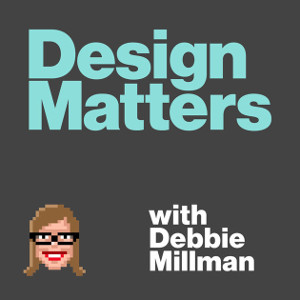5 Podcasts for Human-Centered Designers
Nov 14, 2017
In the field of international development, human-centered designers (HCD) are charged with rapidly developing empathy with a specific, targeted, marginalized population, diving into a social challenge which that group faces, and parlaying that understanding and access into a locally-tailored solution.

Doing so successfully requires one primary skill: listening. That means listening in the traditional sense: to an individual, as DAI does in our Digital Insights work. But, more broadly, listening for design in the international development space means listening to an entire population to identify social challenges as well as the cultural, political, and economic dynamics that affect them and perpetuate the problem.
The podcasts below are all about people who know how to listen. They’ve expanded my understanding of design and sharpened my ability to listen closely when I’m designing a solution. I hope they’ll do the same for you, should you take the time to listen.
Design Matters with Debbie Millman

- File Under: Deep interviews, designer empathy
- Why is it useful for HCD practitioners? Great interviews with all types of designers. Millman is a graphic designer who has worked for all the big names, but in her podcast she’s a psychologist with her patient on the couch, dissecting designers’ thought processes and decision-making. Designers will want to pay close attention to Millman’s interview style and emulate her active listening.
- More: iTunes, Stitcher, Facebook group
Masters of Scale with Reid Hoffman

- File Under: Deep interviews, tech heroes
- Why is it useful?: Reid Hoffman is the tech world’s closest thing to the Oracle of Delphi. As the Chief Operating Officer at PayPal and then co-founder of LinkedIn, Hoffman now advises other startup founders on how to tackle the challenges of scaling up their concepts. His podcast is a chance to sit in on those conversations and understand how to tech concepts go from idea to startup to scale-up. Designers would do well to pay close attention to how Hoffman and his guests describe their thought processes around scale-up during the initial design phase, as most (all?) tech tools designed for the international development space are intended to be scaled up.
- More: iTunes, Stitcher, website
The Tim Ferriss Show

- File Under: Deep interviews, tech heroes
- Why is it useful for HCD practitioners? Ferris is the author of “The 4-Hour Work Week” and a serial entrepreneur. On his podcast, Ferriss interviews A-List tech heroes and digs deep to understand who they were before they were successful designers, how they came up with their concept, how they tested it, and how they took it from idea to product.
- More: iTunes, Stitcher, website
99% Invisible

- File Under: Design history, physical spaces
- Why is it useful for HCD practitioners? Roman Mars presents famous and intriguing design cases from the past and present and breaks down the “why.” Looking at cases ranging from Antoni Gaudi’s Sagrada Familia cathedral in Barcelona to the “Doll Houses” of St. Louis, Mars explores the design process as well as the social, political, and economic context that explain the problem, solution, or case.
- More: iTunes, Stitcher, website
UX Podcast

- File under: User experience, Swedish perspective
- Why is it useful for HCD practitioners? A more wry take on design from James Royal-Lawson and Per Axbom (his real name) primarily concerned with the nuts and bolts of digital design like user experience, user interface, but also broader takes on design, the tech business, and the distinctions between the American and Swedish approach to design.
- More: iTunes, Stitcher, website
Bonus: This is HCD

- File under: User experience, designer empathy, global perspective
- Why is it useful for HCD practitioners? This is HCD is hosted Gerry Scullion and Chirryl-Lee Ryan, two designers with as much wry wit as design experience (that is to say, a lot!). Gerry and Chirryl-Lee seek to answer the question “What is HCD?” by exploring the practice and its core components through the lens of practicing designers. Previous episodes cover ethnographic thinking in design, stakeholder engagement within large organizations and the intersection of Service Design and User Experience Design.
- More: iTunes, Stitcher, website